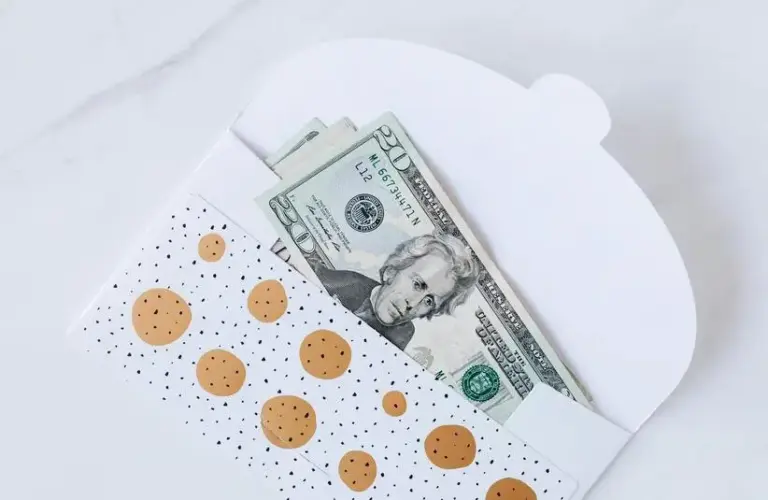7 Common Challenges of Breastfeeding—And How to Overcome Them
Breastfeeding is far from easy, despite being a natural process. Things don’t always go as expected for mothers; some women experience issues with one child that they do not encounter with others. Sometimes the issue is mechanical (the nipple may not be in the greatest condition for feeding); other times, the issue is medical. Whichever, the best defence against some of the breastfeeding challenges is early intervention. Knowing how to overcome them in advance will help you ensure that you have all the help you require if any issue arises, and possibly avoid them.
Sore or Cracked Nipples
Cracked or sore nipples are one of the prevalent issues for nursing moms, which can be caused by several factors (nipple trauma, poor feeding techniques, too dry or moist skin, babies biting or chewing on nipples, fungal infections, or milk blisters), but two potential causes of discomfort are improper latching and posture. Latching and positioning problems are common with moms and babies new to breastfeeding. This shouldn’t discourage them, but fix it using the following:
- Since the underlying cause is a shallow latch. Fix it to stop further damage by helping your baby latch on more comfortably and deeply.
- Attempt other positions like cross-cradle hold, football hold, laid-back hold, and side-lying to see which best suits the baby.
- Never pull the baby off the breast suddenly; instead, gently slip a finger into the sides of the baby’s mouth to break the suction.
- Because babies chew on the nipples for comfort during teething, use a clean, damp towel to relieve their gums.
- Pat your nipples dry and use nipple balm, lactose-specific ointment, or purified lanolin lotion on your nipples to ease soreness after every feed, or dab some expressed breast milk on your nipples for healing (breast milk has therapeutic effects).
- Wear breathable bras instead of synthetic ones to keep your breasts dry and get some air. However, excessively dry breast skin can cause cracked nipples. Steer clear of soaps, shampoos, and solutions that dry up your skin by removing its natural oils. Follow the doctor’s advice when using solutions, or simply use moisturizing oils.
- Use hydrogel pads for pain relief and healing of moist wounds, but change them after every feeding to avoid retaining moisture.
Try hand-expressing for a few feeds to give your nipples time to recover if they are uncomfortable and you are scared to breastfeed. If, after correcting the latching and positioning, your nipples become glossy and extremely red and do not get better when you check the baby’s feeding position. You may have an infection. See a doctor immediately.
Engorgement
Breast engorgement is normal for mothers between days three and five postpartum. However, it can happen at any time when they are overproducing milk or are not frequently feeding their child or expressing their milk. During this period, the breasts are hard, warm, and painful. The pain might get uncomfortable for you and create a latching issue for the baby to take a suck. Take the following actions to manage engorgement:
- Breastfeed often and as needed, ideally eight times or more in 24 hours and for at least 15 minutes at each meal.
- Breastfeed first from the engorged breast if only one is full. If both are engorged, breastfeed from one breast, and let some milk drop from the other side into a cloth or container.
- Manually express some milk before putting your baby to your breast. This would soften the areola and, as a result, make the baby attach more easily.
- Before and during feedings, massage your breasts, working your way from the chest wall to the nipple.
- Eat healthily, stay hydrated (particularly with water), and relax well.
- Avoid pacifiers and other artificial nipples until breastfeeding is going well for mother and baby to control milk supply.
- Taking a warm bath or shower, or placing a warm pack on the breast for a few minutes, will stimulate milk flow.
- Offer both breasts at each feeding once your milk supply has stabilized, but ensure the baby finishes the first side before offering the second.
- Use paracetamol or any prescribed pain relief for pain.
- Reduce engorgement pain or swelling by placing cold green cabbage leaves on your breast. Alternatively, tuck leaves in your bra for 20 minutes until they cool down.
- Ensure your supportive bra doesn’t dig in when you wear it with no underwire.
- If your breasts stay hard and the baby is unable to attach, you should seek medical attention.
Matistis
Mastitis, a breast infection, stems from a clogged milk duct that isn’t cleared after treatment. Due to nipple damage, the breast is exposed to bacteria; hence, you experience a red, swollen, hot, tender breast, nausea, headache, and flu. Ignoring treatment can result in an abscess (a painful accumulation of pus in your breast) and sepsis. Even with the infection, your breast milk is safe for your baby to take. You can manage mastitis early by;
- Increase milk drainage from the breast by increasing feeds and expressing. If breastfeeding gets too uncomfortable, attempt pumping or manual expression to transfer milk out of the breast. Present the unaffected breast first until let-down happens, to reduce discomfort.
- Use a moist and warm towel on the affected area.
- Steer clear of nipple shields.
- Massage the nipple of the affected breast, moving your fingertips in circular motions.
- Wear a supportive, well-fitting bra that isn’t too tight so the milk ducts isnt choked.
- Take adequate rest. Breast infection is sometimes a symptom of too much.
- Take paracetamol or ibuprofen as prescribed for pain.
- Analgesia, such as oral nonsteroidal antiinflammatory drugs, is recommended.
- Treat the infection with anti-staphylococcal antibiotics such as flucloxacillin or cephalexin (500 mg qid), particularly if the symptoms persist beyond 24hours, the nipple is damaged, and the woman is ill.

Low Milk Supply
Reduced milk is the worry of most new mothers. Few moms experience this condition, which is a typical reason why most of them wean their newborns early. They, however, fail to realize their body typically produces just what the baby needs. Aside from a few factors causing it, low milk supply is usually a rare occasion and a temporary condition. Look out for signs the baby is getting enough, or use the following techniques to increase supply:
- Breastfeeding is a demand-supply mechanism—you create more milk as the baby feeds. Initiate skin-skin contact upon delivery and begin breastfeeding as soon as you can. Follow the baby’s cues and allow them to tell when it’s time to eat. Typically, the baby will eat eight to twelve times in 24 hours throughout the first few weeks of life.
- Refrain from adding formula or cereal to breastmilk, at least for the first six months. This could reduce your baby’s interest in breastfeeding, causing milk supply to diminish.
- Ask for breastfeeding assistance after delivery to facilitate proper attachment and sucking.
- Live and stay in the same room as the baby 24 hours a day to encourage breastfeeding.
- Offer both breasts at every feeding and ensure your baby is latching properly.
- Increase your milk production by pumping or expressing milk often in between breastfeeding sessions and regularly when you’re not with your baby.
- To encourage milk flow, massage your breasts, stimulate the nipple, hold your baby skin-to-skin, and relax before feeding.
- Rest well, eat healthily, stay hydrated, and ask for help when needed.
Nipple Vasospasm
Vasospasm is another cause of radiating nipple and breast pain. It happens when the blood vessels constrict, causing burning and throbbing pains. Vasospasm is better when warm and worse when cold; the nipple tip turns white or occasionally purple, and could make nursing mothers discontinue breastfeeding. It is common among those who frequently experience “poor circulation” or cold fingers or feet, and skinny people with low body mass index. Women can manage Vasospasm by;
- Reduce or avoid triggers like poor attachment, things that could cause nipple infection, damage, and exposing your nipple to cold air.
- Keeping your nipples warm with insulated breast pads and heat packs to relieve pain.
- Don’t air your nipples.
- Enhance blood vessel relaxation with magnesium supplements, and evening primrose oil (gamma linoleic) or fish oil capsules (carrying important fatty acids).
- Women with severe vasospasm can use Nifedipine for pain.
Inverted Or Flat Nipples
Women’s nipples vary in size and shape. Some are naturally flat or do not protrude, or bent inward rather than outward. Pregnancy, particularly during the first trimester, can sometimes cause the nipple to naturally evert throughout the following physical changes associated with pregnancy. Other times, nipples may also flatten temporarily due to engorgement or swelling caused by breastfeeding. While breastfeeding may be challenging, it is possible; the baby only needs to latch on to both the breast and the nipple to get milk or use a nipple shield. Here’s how to deal with them issue;
- Push the breast tissue forward to enable a deep latch.
- Express a little to get milk flowing before feeding.
- To aid the baby’s attachment, smear breast milk on the shield’s exterior.
If you are using a nipple shield for better nipple protrusion to facilitate latching
- Use the shield’s large size to enable efficient milk delivery.
- Ensure the baby is sucking and swallowing.
People with inverted nipples can learn more about breastfeeding during a prenatal lactation counseling session.

Nipple Thrush
Thrush is another fungal infection that can make breastfeeding challenging, often resulting from cracked or damaged nipples. The yeast infection makes the nipple pink, flaky, glossy, itchy, cracked, or blistered, and exhibits white spots on the gums, tongue, or inside of the baby’s cheeks. Nursing mothers may experience aching breasts or shooting pains deep during or after feedings. Ensure every natural method possible to obtain a latch before using nipple shields
Manage and treat thrush by:
- Since thrush thrives in warm, humid areas, replace the disposable pads frequently to keep the nipples dry and wear a clean bra daily.
- Use oral gel or drops to treat thrush in the baby’s mouth.
- Moms should use antifungal medications, antifungal nipple gels, and creams to treat breast and nipple thrush.
- Wash your baby’s hands frequently, particularly if they suck on their fingers.
- Boil every breast pump that comes into contact with your milk.
- Purchase fresh nipples and dispose of all pacifiers after a week of treatment.
- Wash nursing pads, bras, towels, and other items in hot, soapy water, then let them air dry outside.
Conclusion
Breastfeeding is a journey; it’s typical to run into bumps, with every woman having a different experience. As a new mom, you may find it difficult to appropriately handle them. However, having the right information and support from an obstetrician-gynecologist or obstetric care specialists can help you enjoy and progress through your nursing adventure.







